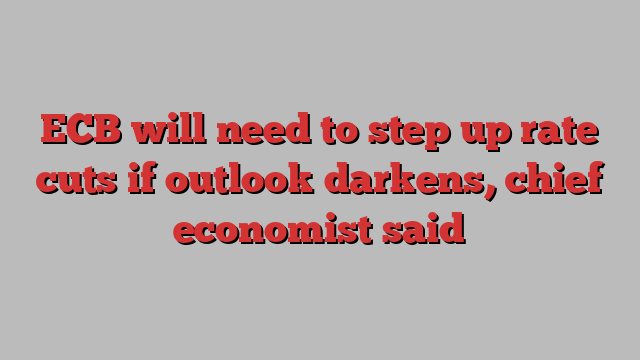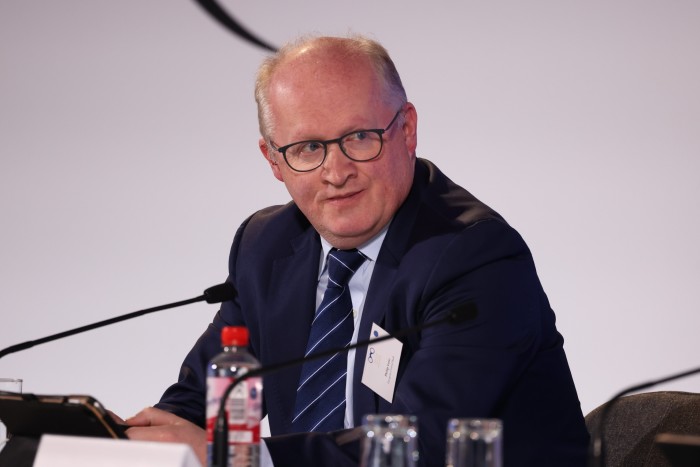
Unlock the Editor’s Digest for free
Roula Khalaf, Editor of the FT, selects her favourite stories in this weekly newsletter.
The European Central Bank needs to stand ready to step up interest rate cuts if its economic forecasts prove too optimistic, its chief economist Philip Lane told policymakers at its most recent meeting.
The official account of September’s meeting, which was published on Thursday a week before the central bank is expected to lower borrowing costs again by a quarter-point, reveals growing concerns about the feeble state of the bloc’s economy. Policymakers were also fretting that their forecasts might be too rosy.
But Lane also stressed that, should inflation prove resilient, or there are signs of a stronger recovery, “a slower pace of rate adjustment could be warranted”.
Since the ECB’s September meeting, when it lowered rates for the second time this year to 3.5 per cent, indicators such as the purchasing managers’ index have pointed to a downturn in the economic outlook. Annual inflation fell more than expected to 1.8 per cent in September, putting it under the ECB’s medium-term target of 2 per cent for the first time in more than three years.

ECB president Christine Lagarde last week said lower-than-expected inflation would be discussed at its October meeting in what was widely interpreted by investors as a hint that the central bank will cut interest rates again. Financial markets are now pricing in two more rate cuts this year, followed by more easing in 2025.
The minutes of the September meeting show that rate-setters have become increasingly concerned about the feeble economic recovery. If areas such as private consumption and investment continued to be weaker than expected, the ECB’s “gradual approach to dialling back restrictiveness” of higher rates should be abandoned, Lane told the 25 other members of the ECB’s governing council.
“If the incoming data indicated a sustained acceleration in the speed of disinflation or a material shortfall in the speed of economic recovery . . . a faster pace of rate adjustment could be warranted,” said Lane, according to the minutes.
The consensus among economists and investors had been that the ECB would lower interest rates by a quarter-point at every other meeting, when it also upgrades its staff projections. However, gradual easing was justified only as long as “incoming data were in line with the baseline projection”, Lane added.
One unidentified member of the governing council pointed out that “the private domestic economy had contributed negatively to growth for the second quarter in a row and had been broadly stagnating since the middle of 2022”.
Others warned that the ECB’s staff September forecast may already be too optimistic, pointing to “incoming data” expected to show weaker consumption and investment.
Some policymakers were starting to wonder if “the projections relied too much on consumption driving the recovery”, the minutes said.
Moreover, policymakers noted that weak investment levels were “atypical for an economic recovery” and at odds with “the very significant investment needs that had been highlighted in Mario Draghi’s report”. In a report commissioned by the EU, the former ECB president last month called on the EU to raise investments by €800bn a year to help stop the bloc falling behind the US and China.
The dismal performance of Germany had become a particular headache for the ECB, the minutes showed. While other parts of the currency area are recovering, Berlin this week warned that the bloc’s largest economy was on track to shrink for the second year running.
“Weak growth in the largest euro area economy, in particular, was dragging down growth,” the minutes state, adding that this created “additional challenges for monetary policy”.